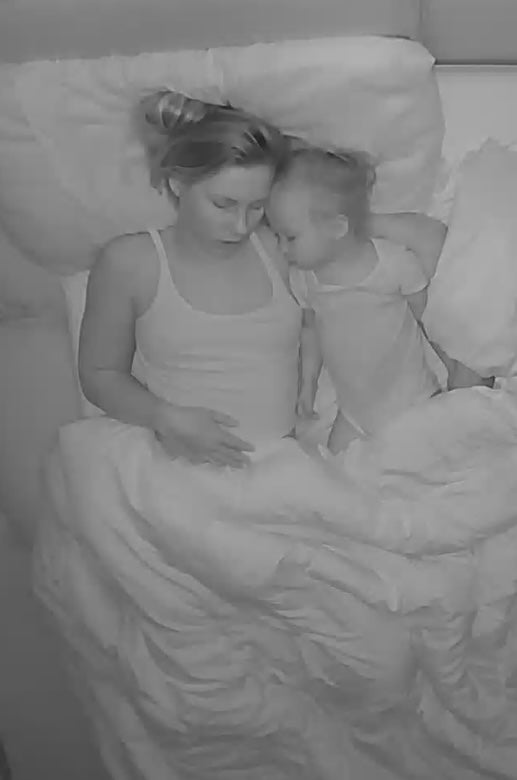
Let’s Talk Cosleeping
When I was pregnant, cosleeping wasn’t really on my radar. I knew I wanted to contact nap as much as possible when Lowen was a newborn — to soak up that warmth and closeness — but nighttime? I pictured a safe little bassinet right beside my bed, and me sleeping soundly knowing she was secure.
I also knew the risks of unsafe sleep practices, and they scared me. I wanted to follow every safety rule to the letter. I thought that was what “being a good mom” looked like.
But then she was born.
And suddenly, the idea of being away from her — even by a few feet — felt impossible. Those first weeks, I would place her gently in her bassinet, snugged right up to my bed, and press my face to the mesh side so she could feel my breath. My body relaxed only when I could hear hers.
Around 3–4 months, things changed. Lowen developed reflux and a soy/dairy intolerance. She refused to sleep on her back in the bassinet. She would only sleep on my chest, where the rise and fall of my breathing seemed to soothe her.
At first, Grant and I took shifts — one of us staying awake while she slept on the other. We thought that was the only “safe” option. But it wasn’t sustainable. We were exhausted. I knew something had to change, so I began searching for resources on how to make cosleeping as safe as possible.
I found chest-sleeping safety guides and implemented them right away. I read about the Safe Sleep 7. I followed every cosleeping account I could find, soaking up tips and encouragement from parents who had been there before me.
Even with those precautions, the first year was full of worry. Cosleeping gave me the gift of more sleep, and I loved not having to sleep-train or be apart from Lowen. In many ways, it eased my postpartum anxiety because I could always see her, hear her, and feel her. But in other ways, it fed that anxiety — because I was still scared of losing her.
Social media didn’t make it easier. My feed was full of heartbreaking stories about unsafe sleep — posts meant to spread awareness (and I believe they should), but each one sent me spiraling into “what ifs.”
Here’s the thing I’ve learned:
Motherhood is full of choices that are both beautiful and heavy. Sometimes the “safest” choice in one way can feel impossible in another. Cosleeping, for me, was both a lifeline and a source of fear. I had to find a way to hold both truths — to honor the closeness it gave us while doing everything in my power to make it as safe as I could.
And maybe that’s the real story here. We do the best we can with the information, resources, and instincts we have. We choose the path that lets us keep showing up for our babies — and for ourselves — as whole, functioning humans.
So, let’s talk about it. Let’s share the real stories — the fears, the midnight snuggles, the research rabbit holes, the exhaustion, and the joy. Because no matter what our nights look like, we deserve to feel supported, informed, and never alone in the choices we make.
Disclaimer: I am not an expert on cosleeping or infant sleep safety. There are significant risks involved in cosleeping with a young infant, and nothing I share should be taken as advice. My story reflects my personal experience and the choices I made for my family after doing my own research. I deeply respect and value the work of those advocating for safe sleep — your voices are vital, and your advocacy saves lives. My intention is never to minimize the unimaginable grief of those who have lost a precious baby, but to hold space for honest conversations about the realities and complexities of motherhood.